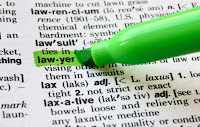"Leaning In" as a Woman Lawyer

The June 2013 issue of the ABA Magazine features women who have ascended to the heights of law firm management. It profiles seven women who currently operate as the managing partner in medium to ubber-large law firms. Most of the women are in their late 40’s or early 50s, and they talk about the choices they made to get these positions in their firms. I want to share some of their comments: Most importantly: Ask to take on the management responsibilities as your skills and credibility expand. Don’t wait to be asked! “Lean in.” Do it consistently over a long period of time. Actively create the future you want for yourself. Avoid any distractions from your top priorities. Develop laser focus on your goals. Establish your credibility by being a very good lawyer who works hard. Have a “dogged” work ethic. Build a lucrative book of business that gives you economic power within the firm. Show you have a “business mind” as w...
.jpg)











.JPG)